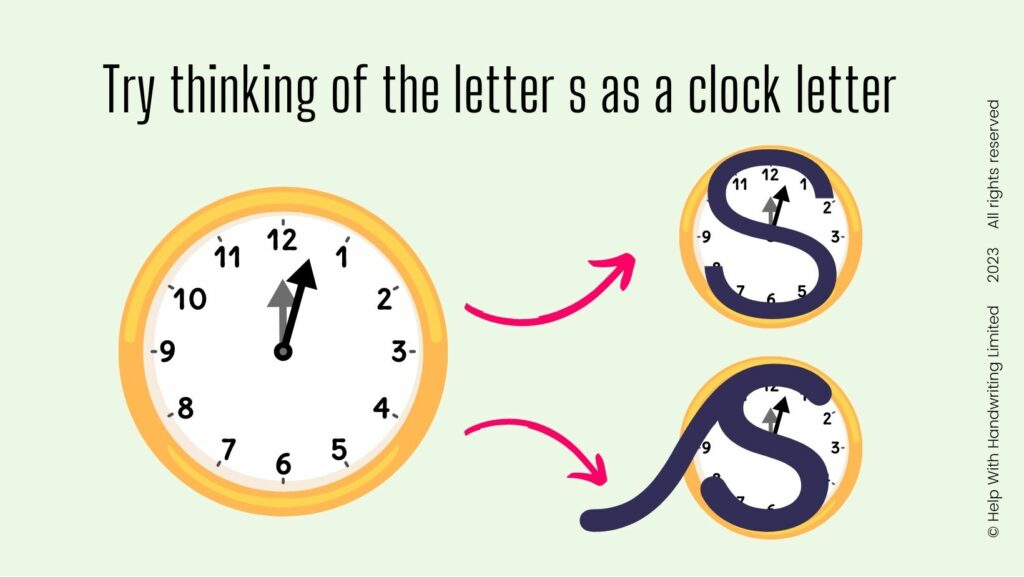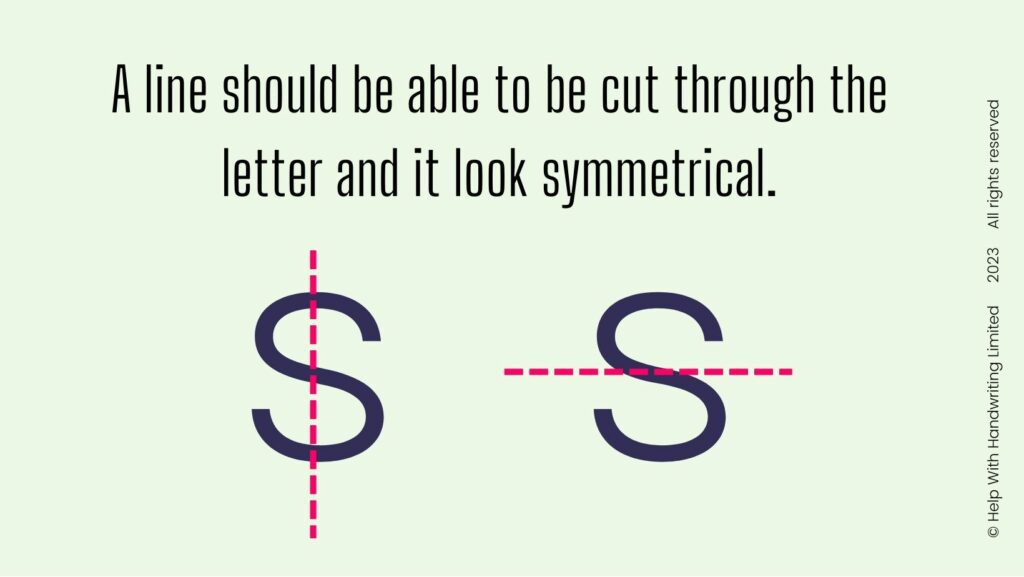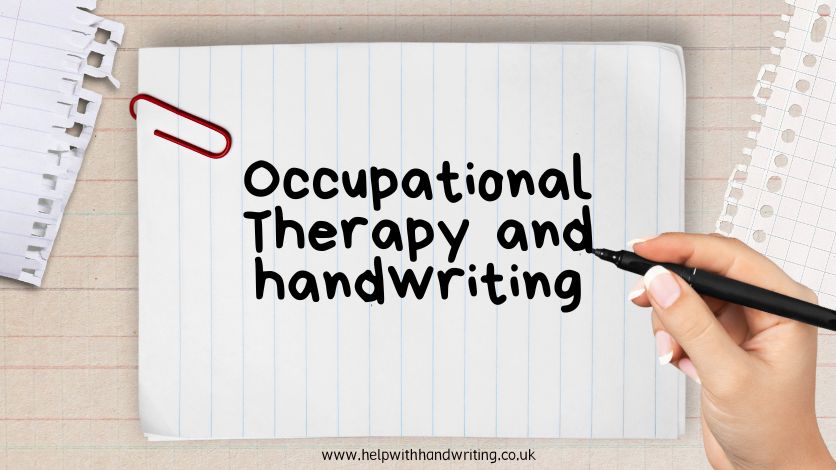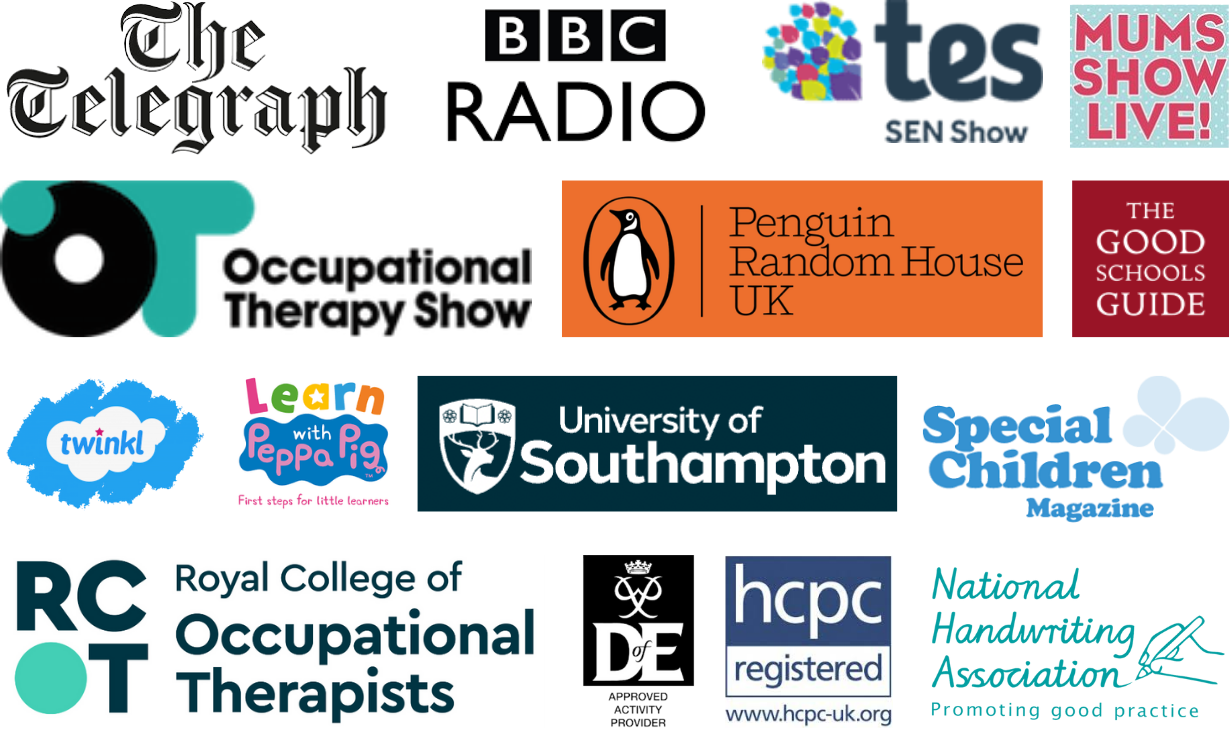The letter S is one of the most difficult letters to write in the alphabet.
This is because the letter s needs one smooth pen or pencil movement. Due to all of these curves, it is more difficult than the letter z. It is for this reason that sometimes the ‘s’ either sits too high compared to other sitting letters. It can sit too low. Go below the line. Or it could look like a lightning bolt.
The videos below will show you how to write this letter in two writing styles. The printed style, or the continuous cursive style. If your child is doing joined-up handwriting choose the video for the printed style. It is best to keep to the writing style that best matches how your child is being taught at school.
1. Printed style
2. Cursive style
What are the differences in the handwriting styles when writing the letter s?
The main difference between printed, joined and cursive is whether there is a lead in stroke. For the cursive style, there is one lead in stroke. It starts at about 8 o’clock position on o’clock and moves up and around to the 1 o’clock position. The letter s is then ready to start being written the same way as the printed style.
Ways to teach writing the letter S:
- Many children associate this letter with the image of a snake. For younger children tracing over the letter and making a snake sound at the same time can be helpful.
- The best method that I know of is to teach writing the ‘s’ as when they imagine a clock face.
A technique that I have heard of is to imagine the letter S as a snowman. The problem with doing this is that you’ve got to think of the snowman as having the same size as the body and head. Otherwise, you will get disproportionate sizes of the letter S.
It should be possible to cut the letter S in half either vertically or horizontally. The letter shape looks the same in both halves.


This is one of those alphabet letters where practice makes perfect. These fine motor movements need both accuracy and practice. To help get this practice completing maze puzzles can be beneficial.
Discover the handwriting do’s and don’t for primary-aged children with this free handwriting resource.










